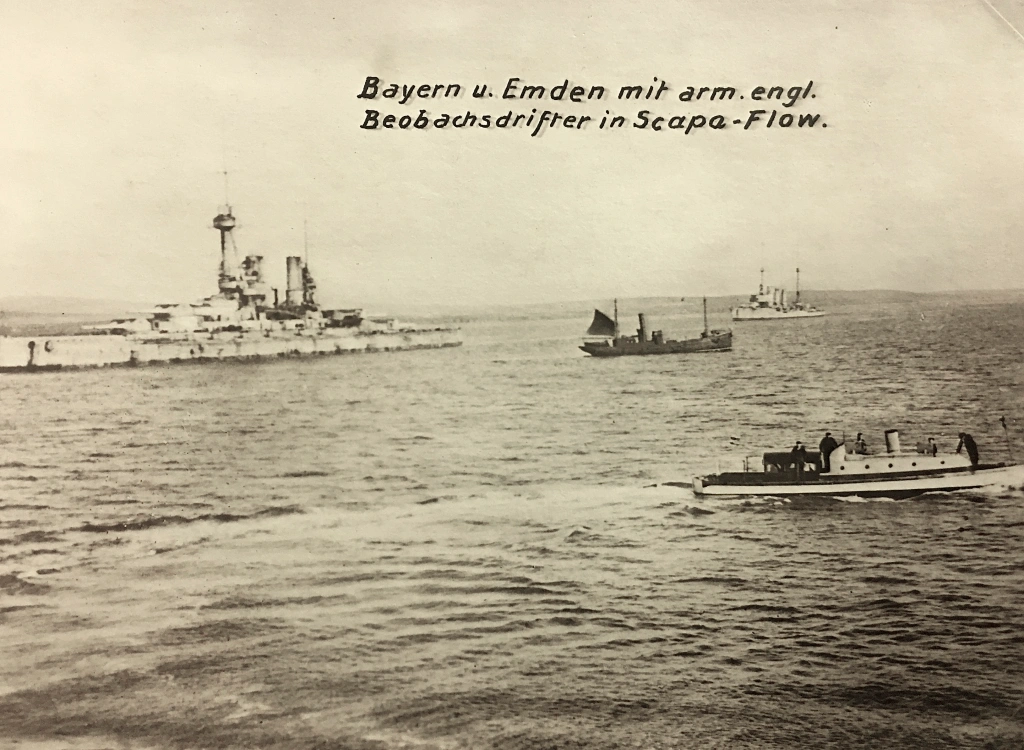The Scuttling of the German Fleet: 2019 Summer Exhibition at the Orkney Museum. Panel 3, Part 2. Von Reuter’s Dilemma



Von Reuter’s Dilemma
Von Reuter had returned to Germany for Christmas. His health was suffering, and he had carried out his orders to take the fleet to British waters. He could have remained in Germany, but he felt that it was his duty to return to the fleet and try to maintain order. On his return to Scapa Flow he found that conditions onboard his flagship, SMS Friedrich der Grosse, had grown intolerable. The Soldiers’ Council and radical members of the crew tried their utmost to make his life as unbearable as possible. He transferred his flag to the light cruiser SMS Emden, the crew of which was still mostly loyal to him. As von Reuter had commanded light cruisers during most of the war, he felt more at home on one. But discipline was breaking down and he felt that he was losing command.

To make matters worse, the British had cut the communication with German Naval Command. Von Reuter was left isolated. He was not informed about the peace talks, as the Royal Navy considered him as merely the man who was in charge of the interned ships, without any real power. He had to rely on four-day old copies of The Times newspaper to find out what was going on.


As the deadline approached, von Reuter read that the Allies had presented harsh peace terms to Germany. There was also talk of the interned ships being sold or handed over to the British. Von Reuter came from a Prussian military family, so he viewed this as unthinkable. His sense of duty and honour would not allow the ships to fall into the hands of the enemy. He sent a wireless message to Germany protesting the proposed sale of the ships and demanding the immediate repatriation to Germany of himself and his officers. His message had to go through the Royal Navy. It was never sent. What little news von Reuter had heard from Germany was this: the German government was unlikely to sign the peace treaty. The Armistice would end at midday on 21st June, and a state of war would resume. He had no idea that the Armistice had been extended to the 23rd June. Von Reuter had thought about scuttling his ships as early as February and had send letters of his intention to the ships’ officers. The British anticipated a possible scuttle. The commander of the 1st Battle Squadron (that guarded the German ships), Vice-Admiral Sir Sydney Fremantle, had written the orders to seize the German ships at midnight on 21st-22nd June. As the Armistice had been extended to 7.00pm on the 23rd, the plan was to be carried out then, if necessary.

To make a donation to any of the museums please follow the link and support us.
